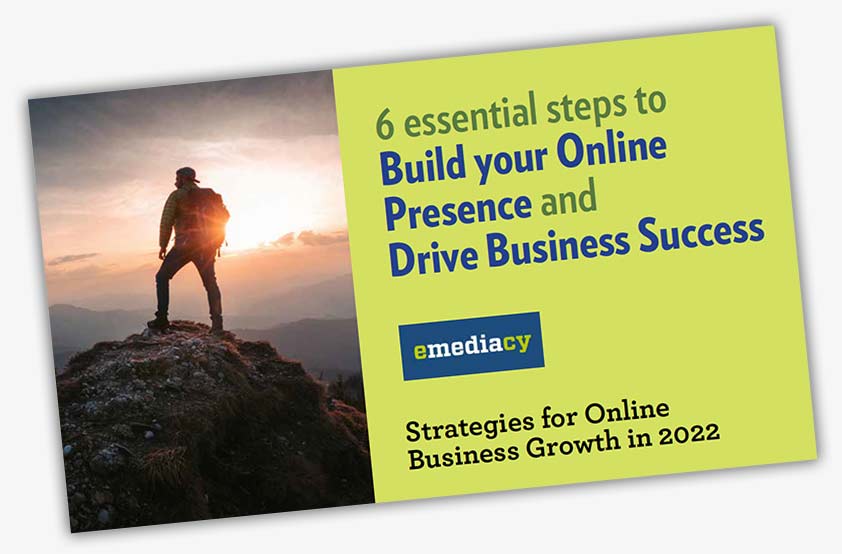How to choose the best tool for your content strategy?
Copywriting is the art of creating persuasive, high-quality content that engages and informs readers, helping them make better decisions. In the world of B2B technology marketing, copywriting is essential for effectively communicating the features and benefits of products and services, building trust with potential customers, and improving search engine visibility. There are a wide variety of tools available for content creation, particularly with the recent explosion of Artificial Intelligence. Read on to explore some of the challenges involved with AI content creation in 2023. This recent Emediacy post compares human vs. AI- assisted content creation.
Step 1: Research tools for content creation
Researching tools for content creation can be a daunting task, especially when you’re unsure of what kind of tool you need for your strategy. Fortunately, there are several steps you can take in order to find the best one for your needs.
First, you’ll want to do some research on the different AI content generation tools available. Look into the features each tool offers, as well as their pricing plans and any reviews or testimonials from other customers. This will help you decide which one is the best fit for your strategy.
Second, once you’ve narrowed down your choices, take the time to test out the tools and get a feel for how they work. Look for features like templates, keyword research, content and headline ideas, and blog outlines. Additionally, make sure the AI tool you choose can generate SEO-friendly content and has the ability to create schema code for blog articles.
Third, you’ll want to make sure you have editors review the content generated by the AI writers. This is important in order to ensure that the content is high-quality and meets your brand’s quality standards.
Finally, as technology advances and your organization’s messaging changes, don’t forget to adapt to these changes. When recalibrating your AI writing tool, use a free trial of a tool like Copymatic, Jasper, or AI-Writer to try out different options and make any necessary adjustments.
By following these steps, you can research tools for content creation and find the best one for your strategy.
Emediacy creates high-quality, relevant content for content marketing and SEO purposes. By understanding the interrelationship between SEO and content marketing, we can create content that is both relevant and optimised for search engine algorithms. Great content makes it easier to generate leads, boost brand awareness, and gain conversions. Working with Emedacy to create content is a great way to ensure high-quality content that is both engaging and optimised for search engine algorithms.
Whether you’re a content creator, copywriter, or marketer, having the right content generation tool is essential for your content strategy. So how do you compare and choose the right tool for the job? Here’s a step-by-step guide to help you make the right decision.
Step 1: Identify Your Content Needs
The first step is to determine the kind of content you need to create. Do you need copywriting services, ad copy, product descriptions, or long-form content? Knowing this will help you narrow down your options.
Step 2: Check Your Budget
Your budget will play a major role in determining which content generation tool you use. For example, free content generators are available but you may need to pay for more advanced tools that offer more features.
Step 3: Evaluate Available AI Content Tools
Once you have a better idea of what kind of content you need and what you can afford, it’s time to start evaluating the different AI content generation tools available. There are plenty of options to choose from, so do your research and read up on each tool to see what features it offers and how it can meet your content needs.
Step 4: Test It Out
Once you’ve narrowed down your options, it’s time to test them out. Try out the different tools and see which ones work best for you. This will help you make an informed decision and choose the one that best fits your content requirements and budget.
Step 5: Use It as a Writing Assistant
Finally, while AI content generation tools can be very useful, it’s important to remember to use them as a writing assistant and not as a replacement for human writers. Fact-check research and make sure the content is original, personable, and provides value.
Whether you are looking for a US-based copywriter, or an AI assisted content creation process, Emediacy has you covered. We have a wide variety of writers specializing in particular markets that can create engaging, relevant content for your business. Great content makes it easier to generate leads, boost brand awareness, and gain conversions. Working with Emedacy to create content is a great way to ensure high-quality content.
Step 3: Consider your business needs and goals
Step 1: Identify Your Business Goals: Start by considering your business needs and goals, and then determine the best tool to help you achieve them. For example, if you are looking to increase brand awareness, consider tools such as social media campaigns or video content. If you need to increase engagement, consider using email marketing campaigns or webinars.
Step 2: Research Your Options: Once you have identified your goals, research the different tools available. Look into the effectiveness of each tool, what it offers, and what it can do for your business. Make sure to read customer reviews, user guides, and look for independent reviews online.
Step 3: Implement the Right Tool: When you have identified the right tool for your needs, it’s time to implement it. Make sure to follow the instructions carefully and ensure that you are using the tool correctly. You may need to test the tool out with a small group of people before launching it to the general public.
Step 4: Monitor and Analyze: After you have implemented the tool, make sure to monitor and analyze the results. This will help you determine if the tool is working correctly, and if it is achieving the goals you set out to achieve. If necessary, you can make adjustments to the tool to ensure it is working effectively.
Step 5: Keep Updating: Finally, make sure to keep the tool updated. This will ensure that it is still relevant and effective in today’s changing business environment. Check for updates regularly and make sure to stay on top of the latest trends in content strategy.
Step 4: Test the tool out before actually using it
How can you test out a tool before actually using it for content strategy? [Step-by-step instructions]
- Research: Start by researching the tool you are interested in using. Look into what the tool specializes in, and whether it is compatible with your content needs. Check out customer reviews, case studies, and other areas of information to determine if the tool is right for you.
- Demo: If possible, take advantage of a demo or a trial period to get a better understanding of the tool. This allows you to explore the features and capabilities of the tool without having to commit to it.
- Test: Once you have a better understanding of the tool, put it to the test. Create a few sample projects to see how the tool works and how it can benefit your content strategy.
- Assess: Assess the results of your testing. Consider how the tool worked for you, how it can improve your content, and how it fits into your overall content strategy.
By taking the time to properly test out a tool before actually using it for content strategy, you can be sure that the tool is the right fit for your needs. This way, you can ensure that the tool will be able to help you reach your content goals and make the most of your content strategy.
Step 5: Try out different types of content generators
With so many content generators available, it can be difficult to decide which one to use for your content strategy. Here’s a step-by-step guide to help you choose the best tool for your needs:
- Assess different types of generative AI applications. Think about the kind of content you need and what type of AI-generated content could help you achieve your goals.
- Read up on successful generative AI examples worth noting. Researching examples of what works (and what doesn’t) can help you make better decisions on which content generator to use.
- Consider the pros and cons of AI-generated content. It can be helpful to weigh up the advantages and disadvantages of using AI-generated content in your content strategy.
- Try out different content generators. Use free content generators to generate sample content and see if it matches your needs and expectations.
- Evaluate the AI content generation tools. Compare the generated content with the content that your team members create and assess which one is better.
By following these steps, you can try out different content generators and choose the best tool for your content strategy. Good luck!
Step 6: Choose the right tool for you.
Choosing the right tool for your content strategy can be daunting. There are numerous productivity tools out there that offer different levels of complexity and a variety of features. To make sure you’re selecting the right one for your needs, here’s a step-by-step guide to help you out:
- Identify your content goals. The first step is to identify what your content goals are. Are you looking for a tool to help with research, writing, or publishing? Knowing your content goals will help you decide what features and capabilities you’ll need.
- Evaluate your team’s needs. What kind of team are you working with? What are their roles and how do they work together? This will help you determine which features are essential for the team to be successful.
- Research available tools. Once you have identified your content goals and the needs of your team, you can begin to research available tools. Look for tools that offer the features you need and that are easy to use.
- Test out the tools. Once you have narrowed down your choices, it is important to test them out. Try out the trial versions to get a feel for the interface and user experience. Make sure the tool offers good customer support and will integrate with any other software you are using.
- Make a decision. After testing out the different tools, you should have a better idea of which one will be the best fit for your content strategy. Consider the features and cost before making a final decision.
By following this step-by-step guide, you can choose the right tool for your content strategy and be sure that you’re getting the most out of it.















